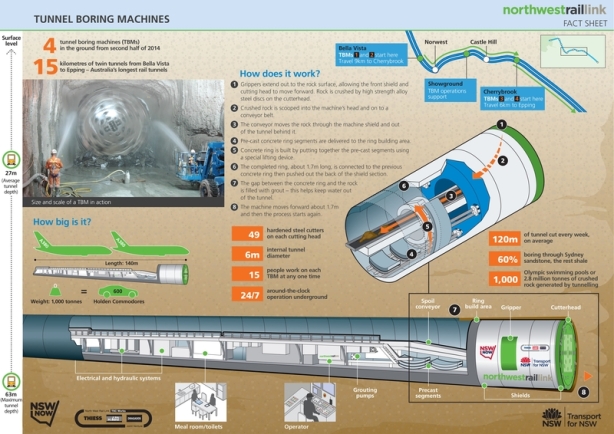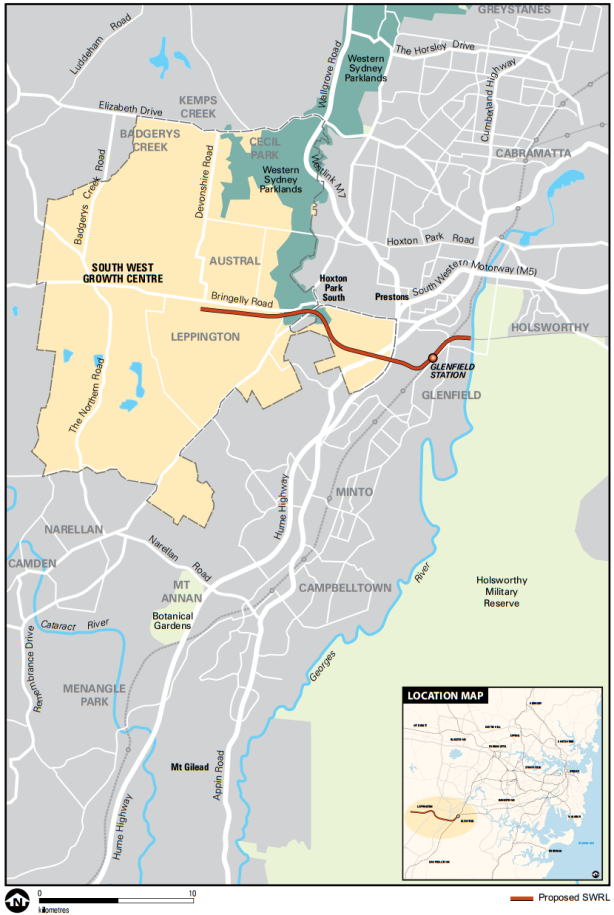Note: For the second time this year, this blog has taken an unannounced hiatus for a number of months due to the pressures of real life. This post was written up at the end of June but never properly finished and thus not posted. It will probably be the final monthly round up, at least for the foreseeable future. This blog will not be ending, posts will still continue. But instead, the focus will be on specific issues or events as they occur with no set frequency of posts. For now, please enjoy the breaking news from 3 months ago…
VIDEO: Urban Taskforce Research- Who Lives in Apartments (31 May 2015)
2 June: $50m cost blowout for NWRL
The budget for constructing the skytrain portion of the North West Rail Link, an elevated viaduct between Bella Vista and Rouse Hill, has blown out from $340m to $390m. Despite the cost blowout, a project spokesperson said that there has been no change to the completion date for the skytrain, while the Transport Minister Andrew Constance stated that variations in cost had been factored into the full $8.3bn budget and that the overall budget remained unchanged.

The skytrain portion of North West Rail Link, shown at the proposed Rouse Hill Station. Click to enlarge. (Source: Transport for NSW.)
4 June: Sydney Rapid Transit renamed Sydney Metro
Sydney’s single deck train network will be known as Sydney Metro, replacing the previous name Sydney Rapid Transit. This follows the passage of legislation authorising the privatisation of state owned electricity assets, which passed both chambers of Parliament the previous day.
4 June: NSW Opposition dumps support for light rail because of Infrastructure NSW Report
The new Shadow Transport Minister Ryan Park, who together with the Opposition Leader Luke Foley recently withdrew their support for light rail down George Street, announced that the change of heart on light rail came after reading the 2012 Infrastructure NSW Report that opposed George Street light rail. The alternative bus tunnel option suggested by the report was criticised by Transport for NSW, with Infrastructure NSW later supporting George Street light rail.

A very early proposed map for the CBD BRT would see a tunnel between Wynyard and Town Hall, removing many buses from the surface streets. Click to enlarge. (Source: First Things First, Infrastructure NSW, page 99.)
6 June: Transport corridors in Western Sydney to be reserved
Work to reserve transport corridors in Sydney’s West for an Outer Sydney Orbital motorway, Bells Line of Road to Castlereagh Connection, and South West Rail Link extension is moving into the public consultation phase. The NSW Roads Minister Duncay Gay said that work on the 2 roads was not expected to begin for decades; with the SWRL corridor set to be identified by late 2016.
8 June: Olympic Park becomes preferred light rail option
A light rail line connecting Parramatta to Olympic Park has firmed as the favourite option for a new light rail line in Sydney’s West. The line could extend out to Wesmead in the West and Strathfield in the East. It gained favour after a campaign by businesses and developers who touted the possibility for development of the corridor and the potential for value capture from that development to fund the cost of building the new line. However, local councils have labelled the line a white elephant and are calling for the Government to build a line to Epping instead.
11 June: Opal only gates installed at Wynyard Station
New Opal only gates have been installed as part of the Wynyard Station upgrade. Opal only gates have recently been installed at Olympic Park Station. No date has been set for the full phase out of ticket gates that accept magnetic stripe paper ticket.
https://twitter.com/TheOpalUser/status/608901203326423040
12 June: SWRL connection to CBD via Granville?
Transport blogger Nick Stylianou suggests that Leppington trains may be connected up to the T2 South Line, travelling to the CBD via Granville. This may happen as soon as the end of this year, with Campbelltown to city services running exclusively on the T2 Airport Line.
https://twitter.com/kypros1992/status/609128666828705792
12 June: 65 new transport officers
Sydney’s existing 150 transport officers is set to increase to 215, with an additional 65 transport officers to be hired.
15 June: Trial of backdoor boarding on CBD buses
The Government is set to trial boarding of buses via the back door for 2 weeks. The trial will be restricted to Opal card users between 4PM and 7PM at 7 bus stops in the CBD. Marshals will be present to ensure boarding occurs safely. It is hoped that the trial will see lower dwell times for buses by allowing customers to board more quickly.
VIDEO: Seven News Sydney – Trial of back door loading on buses (15/6/2015)
19 June: Reduction in minimum parking requirements
The NSW Government has announced a watered down version of a minimum parking requirement policy that it announced last year. The new policy allows new apartment blocks in areas well serviced by public transport to have fewer off-street parking spots than is currently mandated by local government regulations. The previously announced policy would have eliminated the requirement for off-street parking entirely and has not been adopted. Supporters of the move argue that it will help to keep construction costs down and help with housing affordability. Opponents of the move claim that it will cause cars to spill over into existing streets where parking is already scarce.
23 June: Barangaroo Station confirmed
A Station at Barangaroo has been confirmed in the Sydney Metro City and Southwest. Stations still to be determined are Artarmon, St Leonards/Crows Nest and either Sydney University or Waterloo.
VIDEO: Sydney Metro Barangaroo Station






















